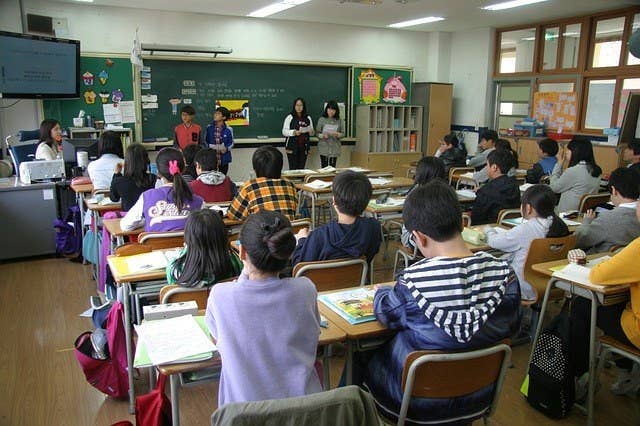1. Toys: "Princesses vs Superheroes"
View this video on YouTube
“Kids generally just tend to want to play. So if you give them toys, kids will play with them. If you give them a cardboard box, they’ll play with it,” claims Murdoch University psychologist and mother, Bree Abbott. If children are so willing to play with any toy that they deem fun and exciting, why is it, then, that toys have become so gender specific?
While strolling down any modern day store, you may not think much of the fact that the toy aisles are distinctly separated as those intended for boys and those intended for girls. One is significantly blue, and the other overwhelmingly pink. Lined up on the shelves of the girls’ aisle you may find Barbie dolls dressed in miniskirts and crop tops, Disney princesses, and Easy-Bake Ovens. When you journey down the boys’ aisle, however, there is a drastic difference. Here you’ll find Marvel superheroes fighting off evil villains, footballs, and Hot Wheels. These two separate aisles are sending a direct message to children: girls play with princesses and boys play with superheroes. It is this dividing line between male and female toys that is encouraging gender stereotypes among our youth.
A young girl from Newburgh, New York named Riley, angered by the limited options in the gendered toy aisles, simply explains, “Some girls like superheroes; some girls like princesses. Some boys like superheroes; some boys like princesses.” However, these likes and dislikes may not always be expressed, as children feel pressure to play only with toys that are “made for their gender.” Martin, Eisenbud, and Rose explain in their study called “Children’s Gender Based Reasoning About Toys,” that gender stereotypes act as a tool for children to determine “how each sex should look, act, and think, according to cultural beliefs.” They elaborate on the idea that children first decipher which toys are “for boys” and which toys are “for girls,” drawing on preexisting knowledge and observations of other children. This way of thinking becomes ingrained in their minds and is eventually done automatically, subliminally encouraging children to play with toys specific to their gender.
Although there doesn't appear to be much harm in girls playing with princesses and boys playing with superheroes, according to Cherney, Kelly-Vance, Glover, Ruane, and Ryalls, researchers at the University of Nebraska at Omaha, studies show that toys labeled “for girls” tend to stimulate a “higher level of play complexity” in both genders. This becomes an issue when children are having different learning experiences that may influence their lives in the future, benefiting some, while hindering others. “Furthermore, the fact that only female stereotyped toys elicited high complexity of play behaviours demonstrates that toys and the gender stereotype that is attached to them is an important issue in play assessment that needs to be addressed.”
View this video on YouTube
Channel Seven Perth. “Today Tonight - Gender Toys.” Online video clip. YouTube. YouTube, 29 July 2014. Web. 27 July 2015.
CNN. “Girl's rant targets gender roles, toys.” Online video clip. YouTube. YouTube, 26 Dec. 2011. Web. 27 July 2015.
Martin, Carol Lynn, Eisenbud, Lisa, and Rose, Hilary. “Children’s Gender-Based Reasoning About Toys.” Child Development 66.5 (1995): 1453-1472. Print.
Cherney, Isabelle D., Kelly-Vance, Lisa, Glover, Katrina Gill, Ruane, Amy, and Ryalls, Bridgette Oliver. “The Effects of Stereotyped Toys and Gender on Play Assessment on Children Aged 18-47 Months.” Educational Psychology 23.1 (2003): 95-106. Print.
2. School: “Maybe Girls Just Don’t Like Physics”

3. Sports: “Girls Can Tackle Football, Too”
View this video on YouTube
Participating in sports has always been a great way for children to get involved, meet new people, and stay in shape. They are incorporated into and encouraged by schools, shown to not only benefit students physically, but also academically. It is seen, though, that there are also stereotypes lingering in the world of sports as well. Sports are often portrayed as masculine, and the ones that seem to get the most coverage by the media are those particularly played by men. This impression often discourages girls from partaking in sports or only participating in those deemed by society as feminine (dance, cheerleading, gymnastics).
In the study, titled “Social Antecedents and Consequences of Gender-Sport Stereotypes During Adolescence,” Julie Boiche and fellow researchers introduced the term "Expectations of Success," and defined it as “the chances of success estimated by the individual in a given situation.” They explain that children willingly participate in sports based on their perceived ability to succeed in that activity, and are more likely to feel competent when stereotypes of that sport are in favor of their gender. Girls who feel and are told that soccer is a masculine sport are less likely to try out for the team and if they do, more likely to drop out. Girls are then unable to reap the benefits of participating in sports, such as creating an idea of positive body image, which is especially important for girls going through puberty.
It is also noted that parents have quite an influence on their children’s perception of gender and sports. Mothers who believed that sports were part of “mans’ world” were more likely to view their daughters as incompetent and their sons as competent in these physical sports. However, some parents are trying to eliminate the stereotypes and encourage their daughters to partake in whichever activity they may choose, even football. When 12 year old, Sam Gordon showed interest in playing football, her father helped establish the Utah Girls Tackle Football League (UGTFL), the first in the US. The team and its supporters believe that girls and boys should have equal opportunities to participate in the sports that interest them the most, empowering girls to view sports as more than just a “man’s world.”
"Girls Can Tackle Football, Too"
http://time.com/3935253/girls-can-tackle-football-too/
Boiché, Julie, Plaza, Mélissa, Chalabaev, Aïna, Guillet-Descas, Emma, and Sarrazin, Philippe. “Social Antecedents and Consequences of Gender-Sport Stereotypes During Adolescence.” Psychology of Women Quarterly 38.2 (2014): 259-274. Print.
Gregory, Sean. “Girls Can Tackle Football, Too.” Time Magazine. n.p. 25 June 2015. Web. 27 July 2015.
4. Parents: "Biggest Supporters?"

5. Media: "Believing is Seeing"

6. Clothing: "Blue is for Boys and Pink is for Girls"





